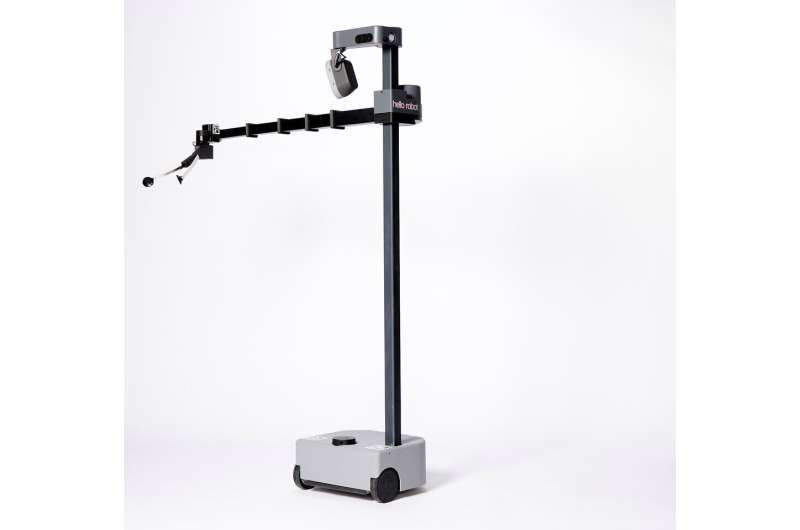The former head of Google's robotics division has unveiled a new robot named Stretch that he hopes will prove to be an economical and handy assistant around the home.
And it's no stretch to say that it could provide a blueprint for future efforts in practical, low-cost automated devices to assist with household chores.
Aaron Edsinger, along with partner Charlie Kemp of the Georgia Tech Institute for Robotics and Intelligent Machines, say simplicity was key. They devised a lightweight machine consisting of a wheel base, a three-foot-high center pole and a telescoping touch-sensitive arm that, as its name suggests, stretches, and intelligently grabs and handles objects. It can carry items weighing up to three pounds.
"What sets this robot apart is its extraordinary reach, which is why we named it Stretch," said Edsinger. The arm, which moves easily along the center pole from top to bottom, can stretch out about 20 inches from its base.
Stretch's compact footprint enables it to easily maneuver around the home, particularly in tight spaces. It's ideally suited for simple tasks such as vacuuming, cleaning, storing objects or transporting items around a home or office space. It can place items on a bookcase shelf or remove clothes from a dryer.
Co-developer Kemp says he programmed Stretch to feed his cat while he was on vacation.
Edsinger and Kemp, who head up a 10-person company named Hello Robot, say Stretch is the first mobile robotic device that can move so easily around the home or office. And unlike most robots on the market today, it requires no special effort to transport: It is light and compact enough that it can be folded up and placed in a car.
Stretch was not designed for heavy lifting; robots that can tackle industrial strength chores are larger, heavier and a lot more expensive, with some ranging in the hundreds of thousands of dollars. Stretch, being offered for $17,900, is a relative bargain for researchers and academic institutions who are expected to be the primary initial customers.
It can operated by a user with a remote control or be programmed to operate autonomously. It packs an Intel RealSense 3D camera that measures distance and a LIDAR (Light Detection and Ranging) sensor to survey and assess its environment. It also comes with a built-in computer—an Intel Core i5 processor with 16GB RAM and 500GD SSD storage. A Robotic Operating System interface allows it to be used with open source software. It even comes with an open source library for accessories that can be created with 3D printers.
Built-in microphones allow speech recognition and voice commands.
Edsinger says Stretch brings portability, functionality and cost into a balance that will allow Stretch to become a template for future innovative endeavors by developers.
"Its patent pending design makes possible a range of applications such as assisting an older parent at home, stocking grocery shelves, and wiping down potentially infectious surfaces at the workplace," he said. "We see Stretch as a game-changing platform for researchers and developers who will create this future."
© 2020 Science X Network























